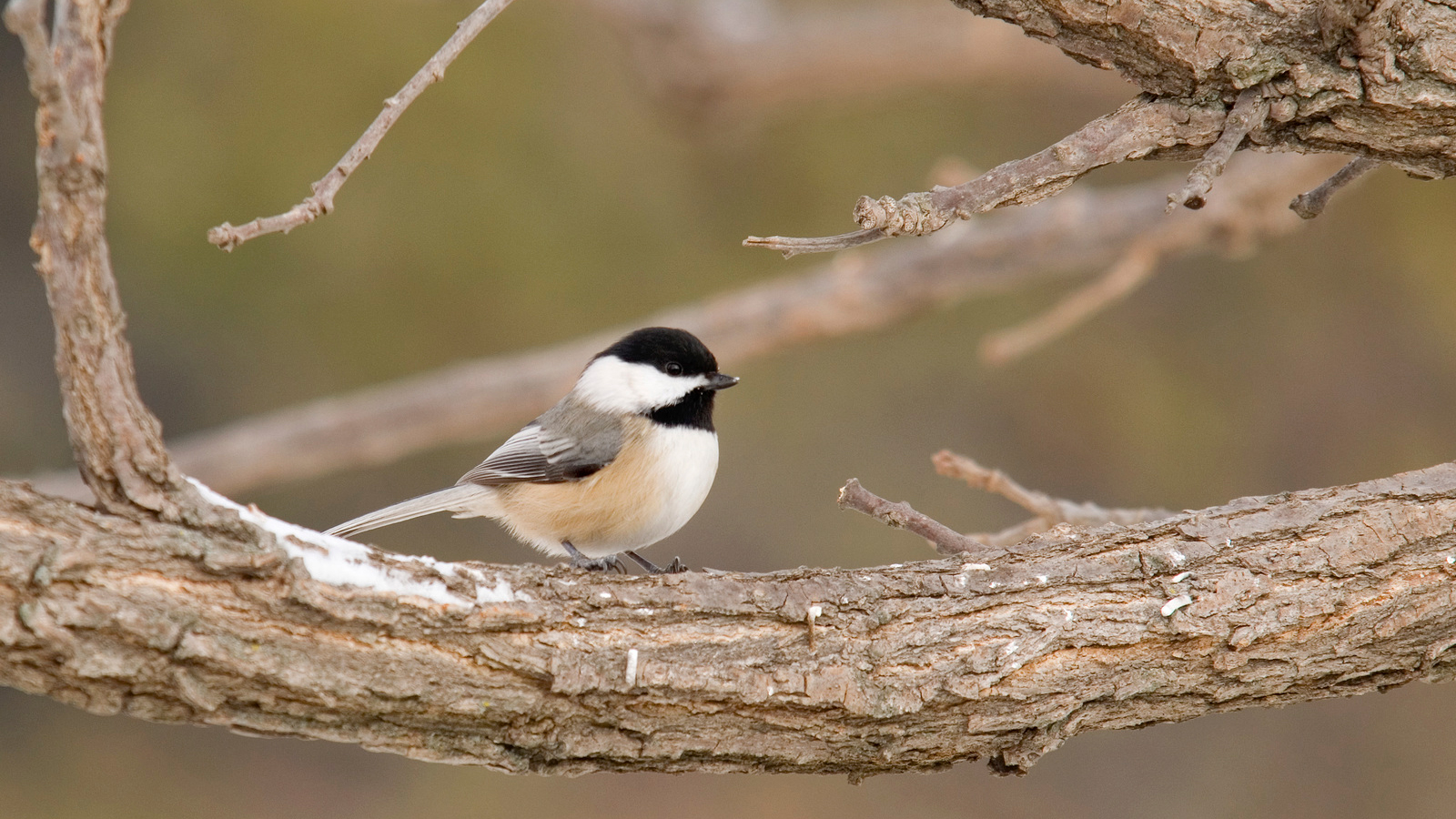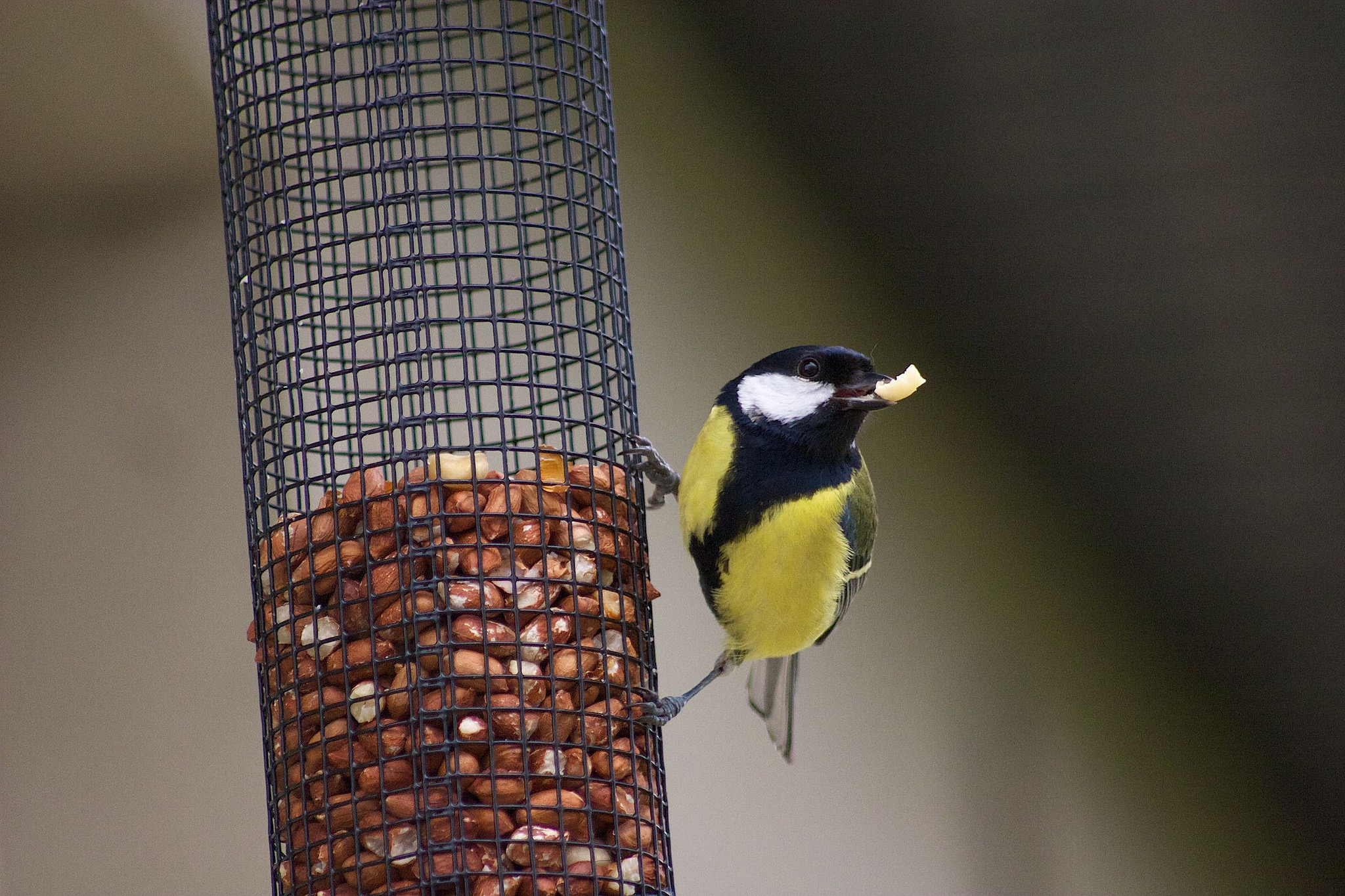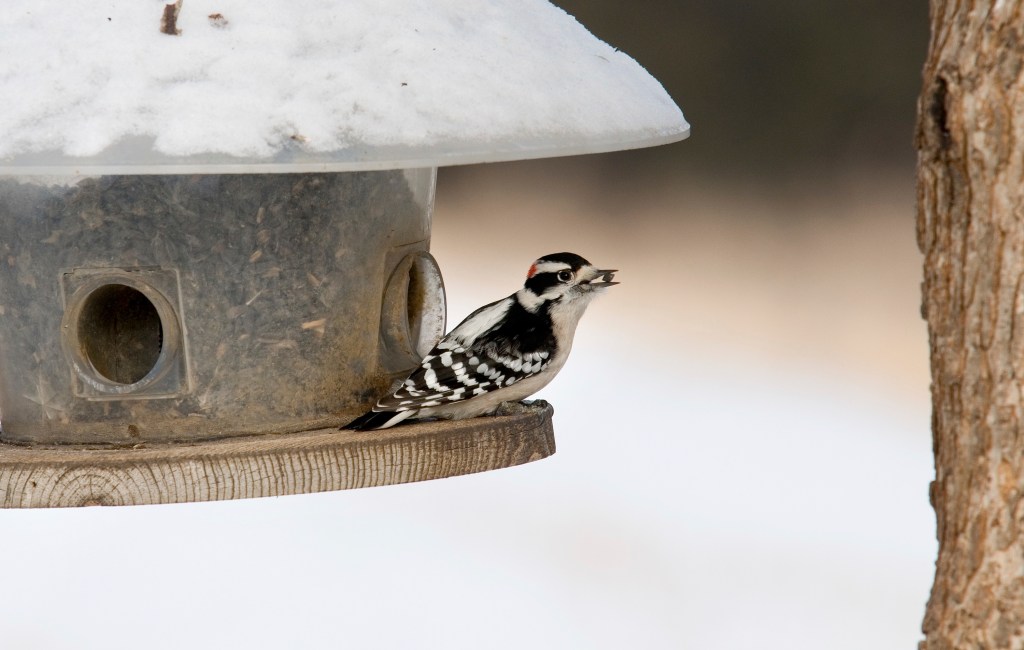Winter bird feeding is one of the most popular ways for people to interact with nature, and most do it to help birds get through these tough months. But what does this really mean for conservation? Does feeding help or hurt birds?
More than 40 percent of U.S. households feed their backyard birds, and in the United Kingdom, the rate is as high as 75 percent.
Despite the widespread popularity of bird feeding, scientists are still building a basic understanding of its impacts.
As we might guess, a number of studies show generally positive impacts of bird feeding. For example, the overwinter survival of birds is enhanced by bird feeding.
This is especially true during the coldest times, when some hungry birds might otherwise lose the battle with the elements1.
A study conducted during winter in Wisconsin showed that black-capped chickadees with access to bird seed had a much higher overwinter survival rate (69 percent) as compared to those without access to human-provided seed (37 percent survival).
Furthermore, some studies have shown that birds making it through the winter in better physical condition see those benefits carry over into the nesting season.
Bird feeding produces significantly earlier egg laying dates, larger clutches of eggs, higher chick weights and higher overall breeding success across a wide range of bird species2,6.

The greatest impact of feeding is seen when birds are most challenged, such as after particularly harsh winters, or when birds are young and inexperienced, or when they are living in low-quality habitats2. Feeding can promote the survival and reproduction of the not-quite-fittest.
But in contrast to these straightforward results – showing that bird feeding makes for better-off birds – a few studies indicate that, at least in some situations, there may be unintended consequences of bird feeding.
A European relative of the black-capped chickadee, the blue tit, was studied in the United Kingdom to examine the impact of bird feeding on nesting success.
One research group3,4 found that birds fed during winter subsequently laid a smaller number of eggs that had lower hatching success and ultimately fledged fewer young than birds that weren’t fed at all. The offspring that did fledge weighed less and had a lower survival rate than the young of unfed birds.
An additional U.K. study of the blue tit and another chickadee-like species, the great tit, had similar findings.
Both species, when they had access to bird food, laid fewer eggs, had lower hatching success, and ultimately had fewer chicks fledged.

Note, however, that these are just two studies demonstrating a negative effect of bird feeding – among a majority that show positive effects.
Nonetheless, the striking findings of lower reproductive success in supplementally fed birds need some explanation. Unfortunately, it was beyond the scope of these U.K. studies to definitively explain how bird feeding resulted in lower reproductive success, but the authors offer several possible hypotheses.
One possibility the authors suggest is that the bird feeding provided an irresistible diet that was unbalanced – too high in fat to produce high-quality eggs. More protein, micronutrients, and antioxidants than are provided by bird seed may be needed to produce high-quality eggs.
Another possibility is that bird feeding allowed individuals with a lower reproductive capacity which ordinarily would not survive the winter the chance to nest.
A final possibility is that the feeders were placed in poor quality nesting habitat – leading the birds to choose these suboptimal sites as nesting areas in the spring.
More research needs to be done across a wider geographic area and on more species to understand not only the impacts of bird feeding on reproductive success, but also on other factors such as disease transmission, species range expansion, and population trajectories.
Citizen scientists can help by participating in initiatives like Project FeederWatch that ask people with bird feeders to share their observations. What you see in your own backyard can contribute to the efforts to answer these questions.




I believe there is value in feeding all who will come to eat, and doing so year round. A choice of foods should be offered, in a variety of feeders, always with plenty of good nearby cover. The result should generally be greater health, greater survival during times when natural food supplies are scarce, better reproduction. I prefer to feed year round, without ever missing a day or letting the feeders get empty. There will always be undesirable outcomes. While feeding is “unnatural”, so is everything else we’ve done to nature. Feeding is small compensation to wildlife for the damage we’ve done to their environment. “Feed the animals” is good advice.
I’m interested in your statement that more than 40% of US households and 75% of British households feed birds. Would you please provide references for those figures? I’m interested in human impacts and would like to read more about that. Thank you.
Thanks for the question! Joe Smith is away at the moment but he will answer your question when he returns.
Feeders of birds should consider that an open and plentiful food source may cause birds to unnaturally delay their migratory progress southward and become confronted with harsh weather conditions which may jeopardize their short-term survival. Also, these feeders become concentrations points at which interactions and possible disease transmission can occur between species that do not typically come in contact.
While I admit I didn’t read the cited work about the 69% survival of chickadees vs 37% without the birds being fed I wanted to point out that this seems quite difficult to maintain a good quality control for, and so this should not be called a survival rate.
Birds being fed are of course much easier to observe and much more likely to continue to return to the same area each day. The control group had a 40% return rate, but I wouldn’t call this a survival rate. Certainly if times got tough I would expect almost all species of birds to move entirely or expand their foraging range unless they had a consistent feeder to take advantage of.
Considering that humanity has pushed out more habitat that supports birds, I feel that bird feeding helps to offset that in a minor way. “Survival of the fittest” implies unimpeded habitat, or time to adjust. We are killing birds at massive rates, with our glass buildings, deforestation and general disruption. The speed with which we destroy cannot be effectively offset by evolutionary changes, which take time. Feeding a few birds can’t hurt them. I realize it tends to favour the seed eaters, but better them than no help at all. Making bird friendly habitat gardens helps too. And cutting back on pesticides.
The way i see it is i am just replacing what the land developers are taking away from them everyday by cutting down the trees and taking away their homes.
A Yellow Rumped Warlber has been coming to my suet feeder in Denver in January. I wonder if it would survive without the suet?
Birds that nest in urban areas are already known to have lower numbers of eggs, and chicks that are less well developed, than birds in rural areas. This is because there are generally fewer insects, larvae, caterpillars etc. in urban areas – especially in neatly kept gardens.
The survey’s birds with greater access to human feeding are probably in urban areas and the birds with no access to human feeding are probably in rural areas. So the disparity is almost certainly explained by the location and is not likely to be a detrimental affect of human feeding.
I live in the Laurentians and consider that 9 of my 10 acres are for the critters of the wild. Still, I fill my birdfeeders daily with sunflower seeds, and even have a friend do the same whenever I take a vacation. I also hang suet blocks for the birds. Although the area is rife with chokecherry trees, by January the fruit is long gone, and it seems that only the squirrels are interested in the plentiful pine cones.The colder it gets (last night it was -34F0, the more I worry about the birds.
Living here in Southern California winter feeding is never necessary. However, some people do like to attract more birds so they feed them. I would be having the same problem as Patty Ciesla with Scrub Jays at my house. The jays are the biggest reason for nest failure that I have when doing NestWatch with Cornell Lad of Ornithology. It would attract them and we have a lot of them. I found a solution to that by feeding by hand! I use walnuts or mealworms. I have a pair of Cal. Towhees and a pair of Oak Titmice that we feed regularly. In the spring I can sometimes get a House Wren to take mealworms and one year I was also feeding her second brood of fledgelings. This winter I am trying to train a Hermit Thrush to take mealworms. I found a big upside to this feeding by hand. The birds more closely associate me with the food. They drop a lot of their fear of us and even when we are not actively feeding they will come by and check us out from just a few feet away, or closer! We get to see a lot of their behavior up close and personal. It’s a lot more fun than seeing them twenty feet away at a feeder. And NO Scrub Jays! Maybe not a good solution for the harsh winters of the East Coast, but in mild climates it’s a fun solution. Go Birds!
Great article. Seems another point needs to be addressed: long-term vs. short-term. It may have some negative short-term aspects, but the long-term benefit of keeping perhaps millions of ordinary folks engaged in birds, and there subsequent financial and political support for bird-related issues and organizations, will be lost. I believe the most critical bird ‘habitat’ in today’s world is money and politics. Telling people to stop watching birds at their winter feeders may in fact be a very short-sighted conclusion, one which could ultimately cause their extinction though lack of funding and political distaste for the issue. Perhaps some researcher will ask how much money feeder owners supply to conservation groups? and how much money would be lost — not to mention political enmity that may develope — should they be required to remove their feeders? The worst scenario is that some Senator
will obstruct conservation funding because of the animus created by short-sighted environmental policies — which is happening right now with Sage Grouse!
I saw a robin carrying a headless hatchling, of unknown species, to wherever… (it dropped it in front of me.) All they want to do is survive and feed their young. No species of birds are “evil,” no species of birds are “mean.” It’s all about what they need to do to survive and take care of their young. Just like humans.
Feed the birds and mammals, and enjoy watching these animals live each day. It’s the least we can do to give back what humans have destroyed of their environment.
“Lots of people talk to animals,” said Pooh…”Not very many listen, though,”
LISTEN to them, RESPECT them.
Perfect!
Has anyone considered the cause of lower bird-birth-count in places where humans winter-feed them might be due to the chemicals/preservatives in the bird food?
Organic bird food is like human organic food: a LOT more expensive!
My husband and I have been feeding birds for years. We maintain our feeders, cleaning and disinfecting them and we pay to have our feeders filled when we are away on vacation. Our yard is also a certified NWF habitat so our gardens, trees and pond provide the natural food and habitat for the birds, the feeders are supplemental and we believe help to maintain our feathered friends in harsh winters. We purchase our seed locally grown without chemicals. We feed everything from Wrens to Crows and even have a female wild turkey that eats off our front step! It’s hard to believe this could be harmful to the birds. Our feeders allow us to enjoy and respect wildlife. Perhaps it’s a give back for taking so much of the natural habitat from the animals.